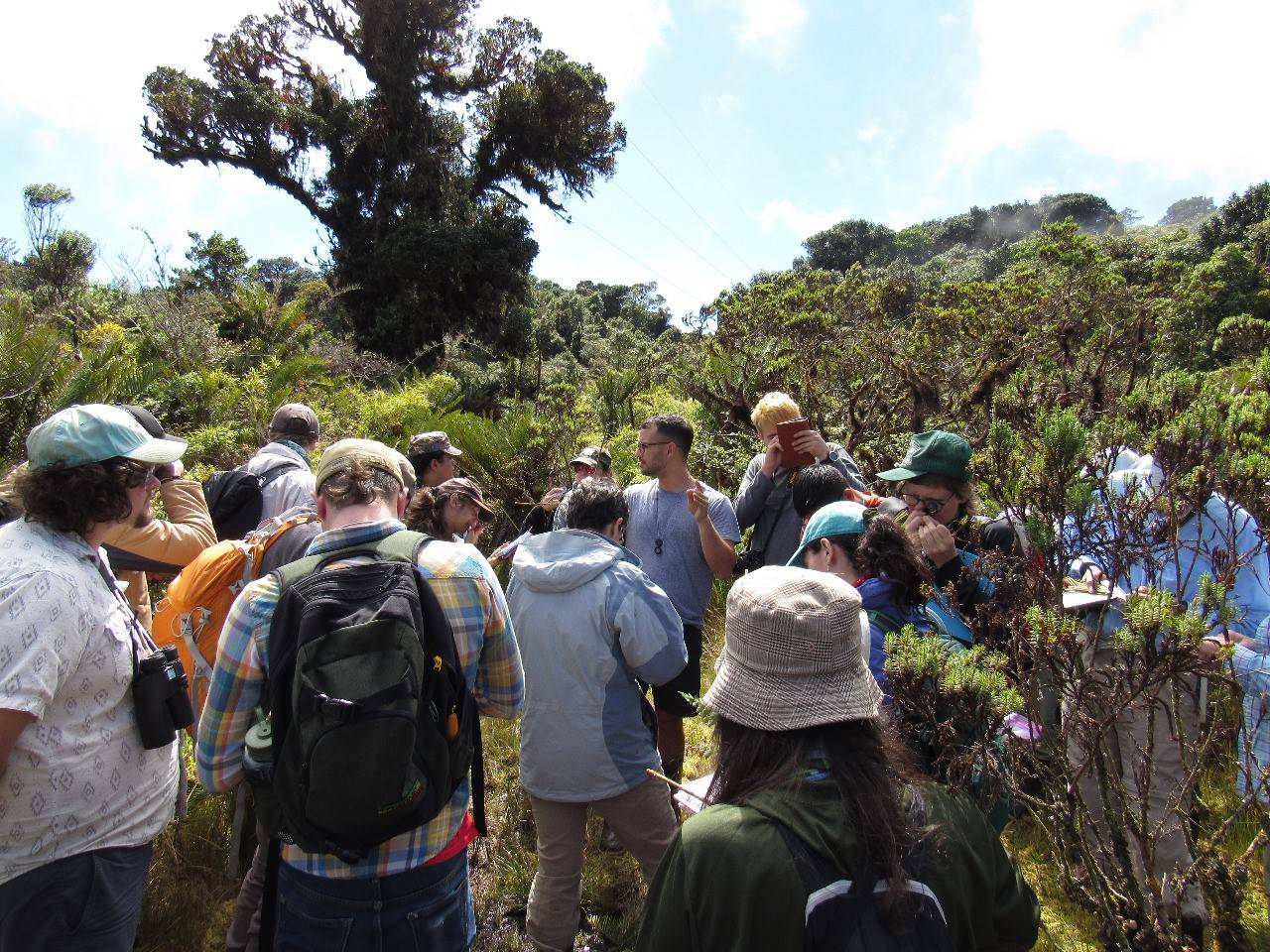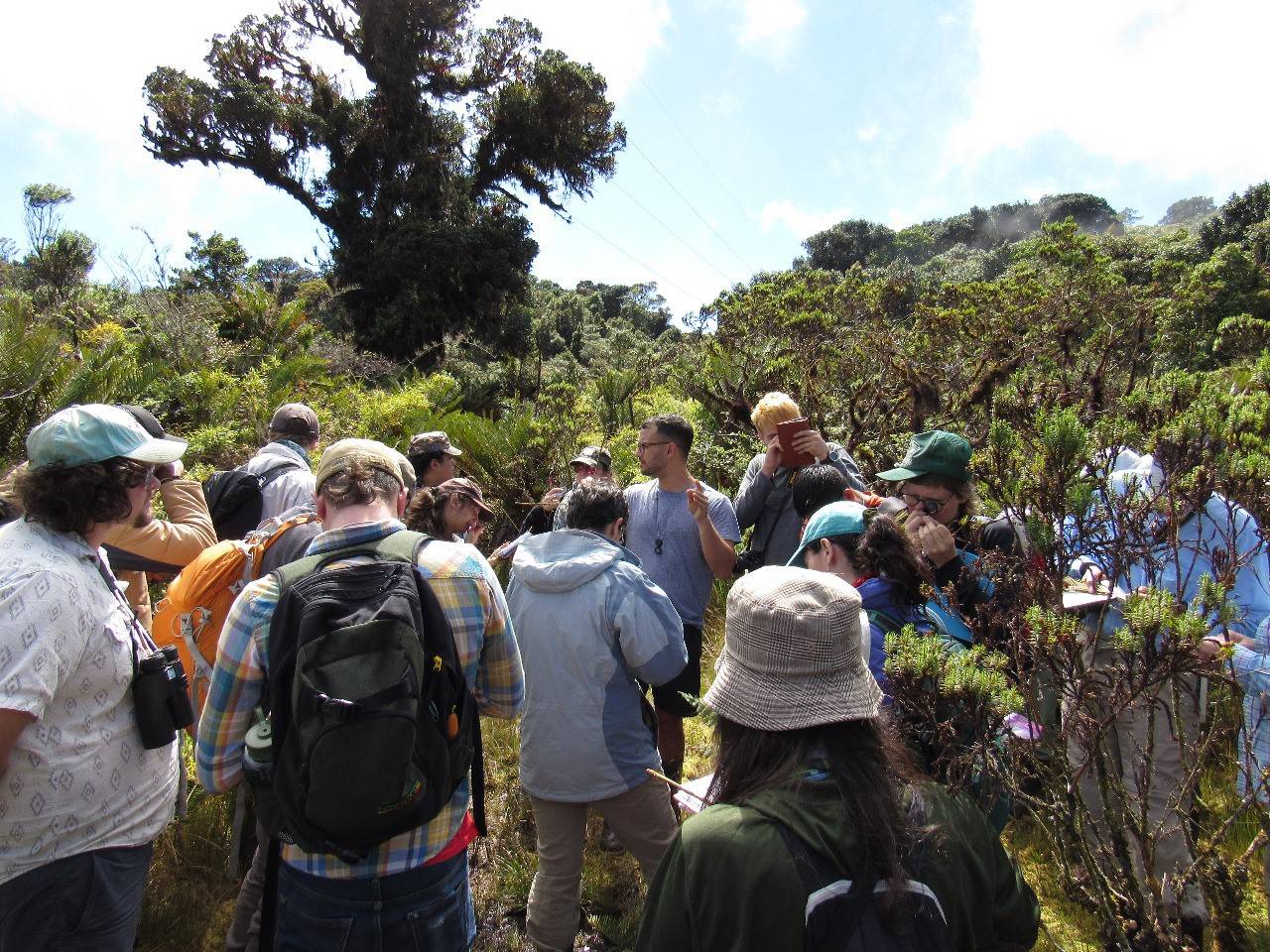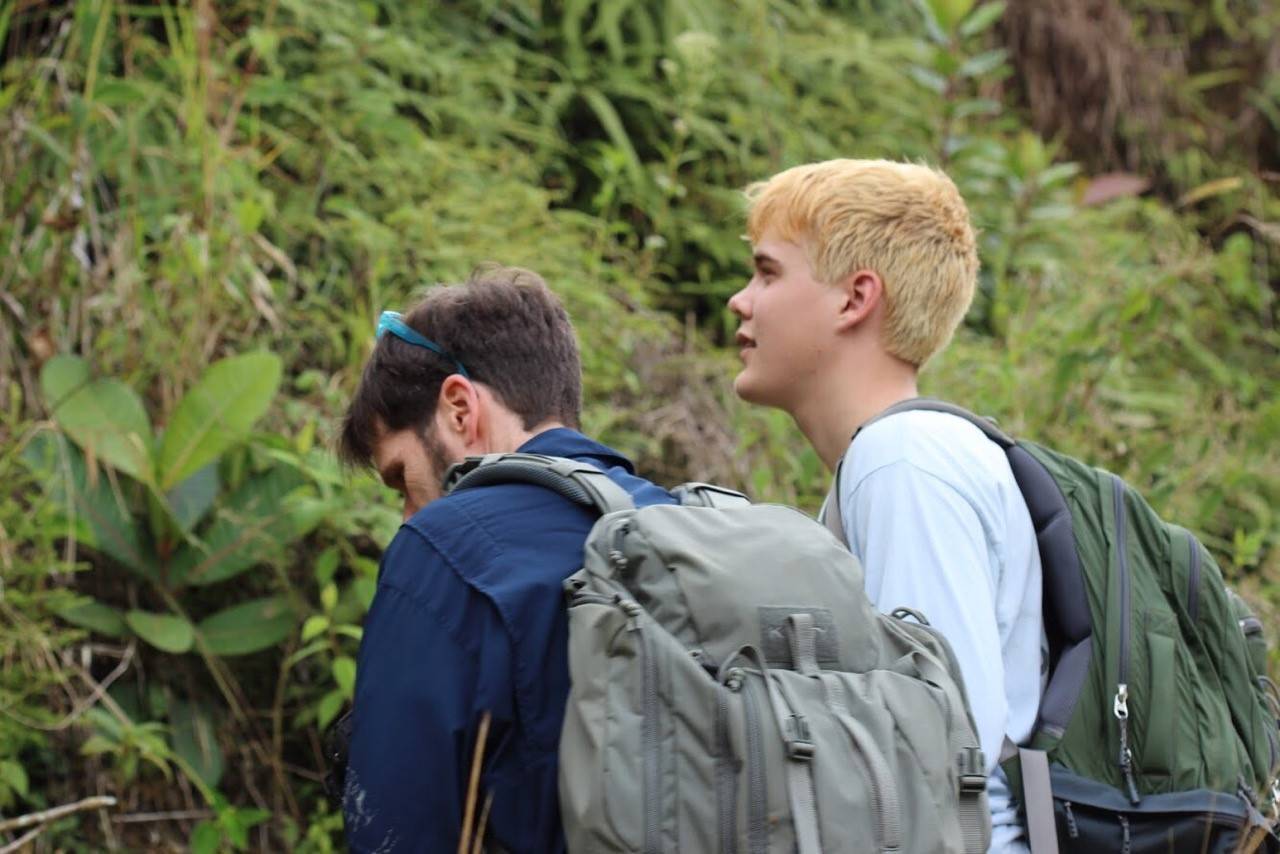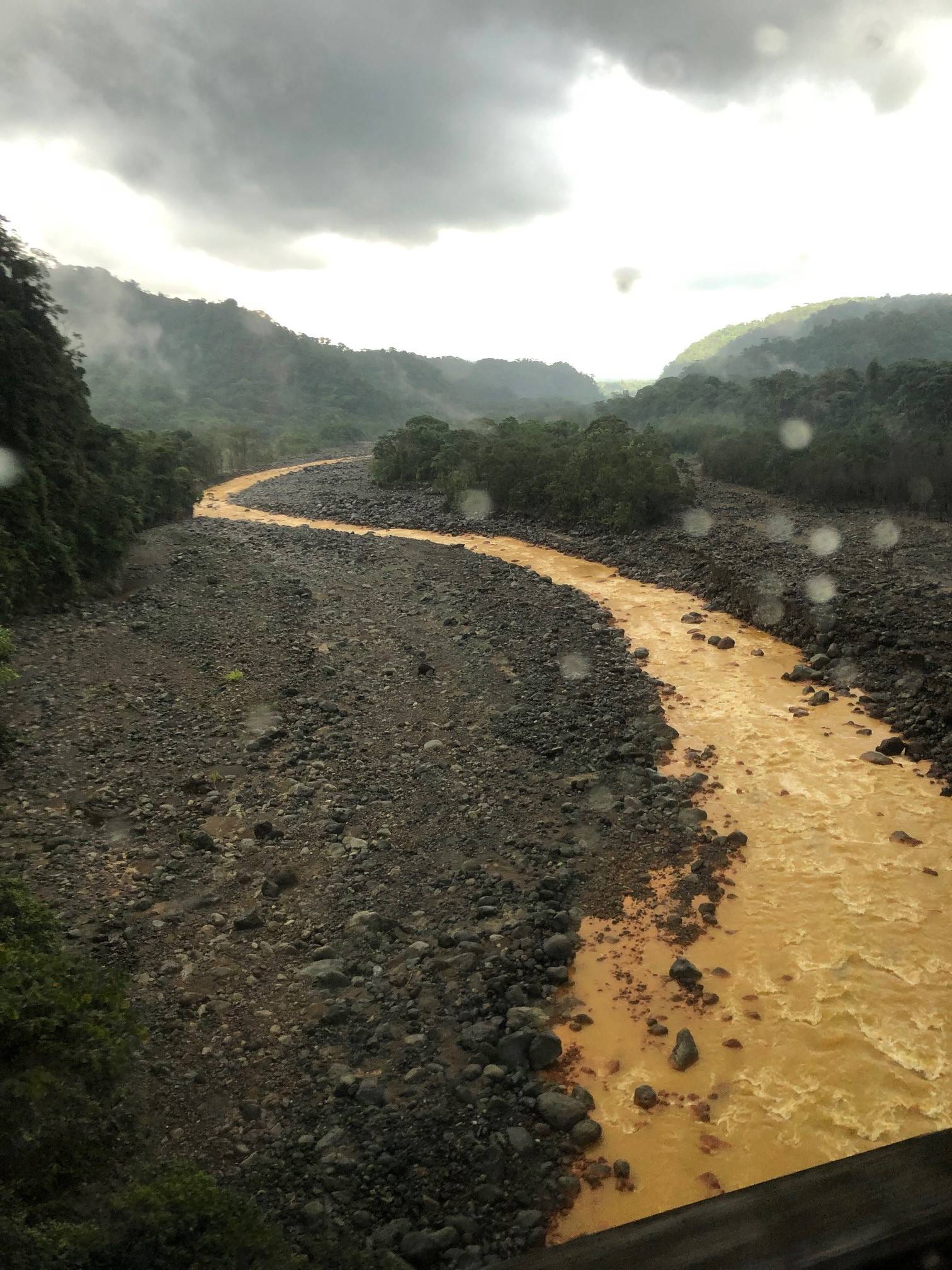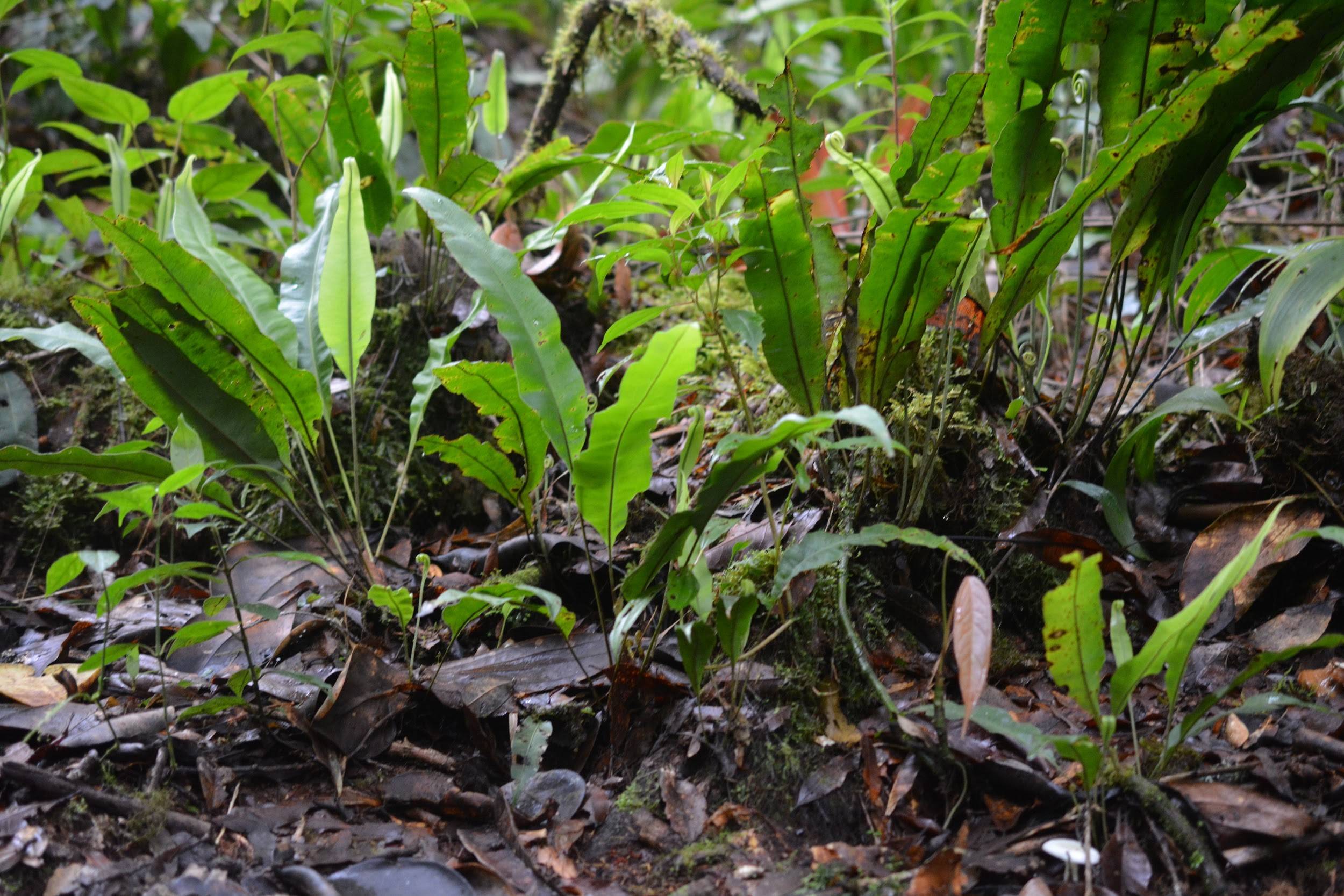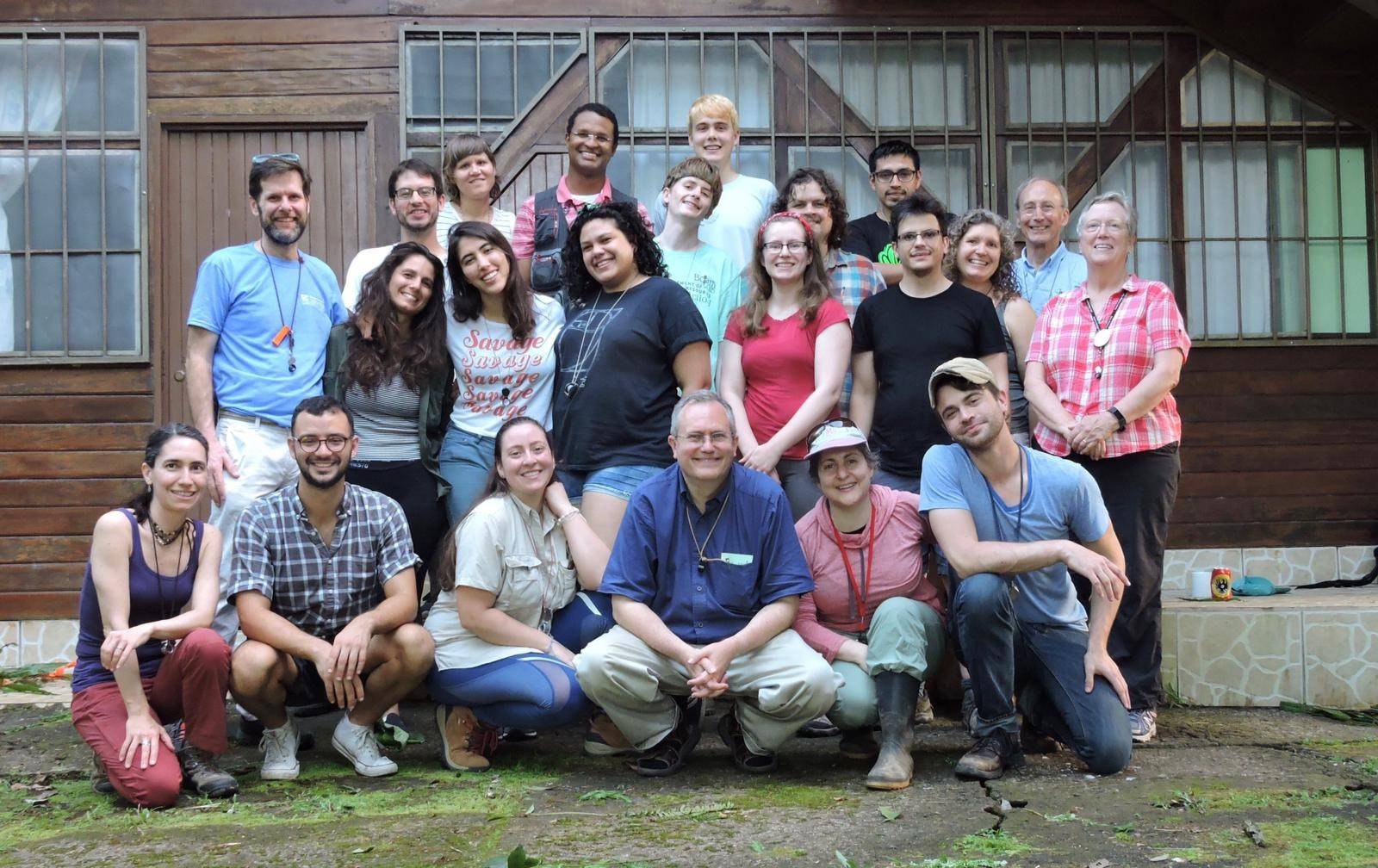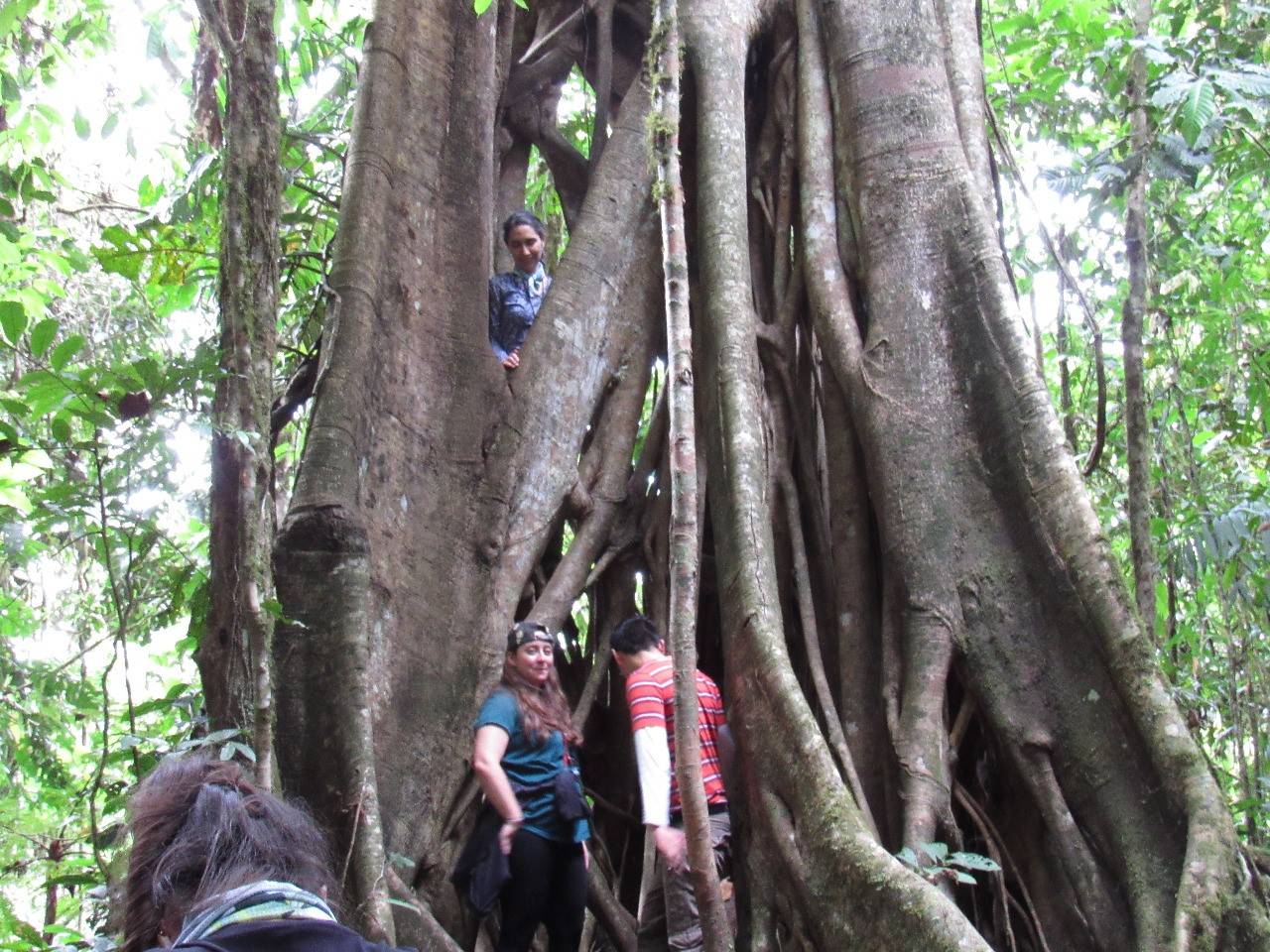During the Tropical Ferns and Lycophytes course, I learned from experts in the field at La Selva Biological station and Las Cruces Biological station. A biology professor at Colgate University, professor Eddie Watkins and a Colgate Alumni, Weston Testo were helping to teach the class. The pictures above show a smattering of the amazing views and experiences that I had on the trip. I crossed skinny, winding roads and the Rio Sucio (the Dirty River). I climbed inside an ancient strangler fig tree. And I spent the majority of my waking hours thinking about and learning about ferns. We visited four different habitats with a variety of ferns at each site so as to learn nearly every genus of ferns in the American Tropics, nearing 100 genera by the end of the course. Each genus we learned to identify using their unique characteristics. Along with learning to identify tropical ferns, we learned the most effective methods for their further study, including how to study phylogenetics, physiology, hybridization networks, gametophyte morphology and breeding systems. For me, this was like being in heaven on earth, because I absolutely love thinking about this type of science.
Beyond the science, I went on daily hikes and took pictures of flowers and wildlife. I saw flowers that I did not even know existed and am still in awe about the diversity of the rainforest. We saw monkeys, morpho butterflies, orchids, sloths, machakas (a fruit eating fish), porcupines, caimans, frogs, toads, snakes, geckos, lizards, and every weird insect imaginable. I spoke in Spanish with the native Spanish speakers in the class every day to try to learn more of the language. Listening to the native speakers every day was a huge challenge. I didn’t understand most of what they were saying. Yet, it was an amazing experience to share cultures with them and to slowly struggle my way through a language that slipped my mind since high school. Having had that experience with those Latin American is motivating me to continue to learn Spanish at a rate that I never thought possible before. I bought my first six pack of beer, because the drinking age is 18 in Costa Rica, and at night after having discussed ferns all day, we would enjoy a beer and dance to latin music. Throughout the trip we disturbed many a scientist trying to sleep, but in the process I learned multiple latin partner dances and many latin songs and words.
A typical day on the station included waking up at 6:00 to go to breakfast when the sun came up and going to our morning lecture shortly thereafter. Next, we would generally go out into the field and learn hands on about the ferns that we could see from the path. Because of the rich biodiversity at each station, we rarely got past the 500 meter mark on the trails. We would go in for lunch, which was almost always rice and beans, the staple of Costa Rica. And then begin our afternoon of lectures and field experiments. Following dinner, we always had a lecture on research methods or particularly interesting areas of research within ferns. To cap it off, people usually sat around discussing science or speaking mind numbingly quickly in Spanish and eventually dancing.
I loved every minute of my experience in Costa Rica on the Tropical Ferns and Lycophytes course. Because of my memories from this trip, and the people that I met, I want to research in the tropics for the rest of my life. It is a magical place filled with fun-loving magical people. There is an enormous amount that remains unknown about the tropics from an ecological standpoint, and I am excited to continue a career in trying to figure it out. Overall, this winter break was definitely not your average winter break, rather, it was a winter break to remember forever.
